Santiago de Compostela (Spain), which is often called the Christian Mecca, has a long and rather interesting history. Now it is visited by more than 1 million people a year. And many of them come here on foot, following the path of the famous Biblical apostle. But even if you are far from religious themes, the numerous attractions of this place will definitely not let you get bored.
General information
Santiago de Compostela is an ancient city located on the banks of the Sar River, the capital of the community of Galicia (western Spain). The population is about 100 thousand people. The total area is just over 400 square kilometers.
It was built in the Middle Ages around the Cathedral, the largest center of pilgrimage and one of the main symbols of the Catholic faith. The name of this settlement consists of several words: “Santiago” – St. Santiago or St. James, disciple of Jesus Christ and “compo stela” – “the land marked with a star”.
It was this star that shone over the relics of the prophet, found here at the beginning of the 9th century, and brought its first settlers to Santiago de Compostela. Since then, this picturesque Spanish corner has become a real mecca for pilgrims who want to take one of the most popular hiking routes. We are talking about the Path of St. John the Baptist. St. James’s, which runs through the whole of Europe and ends just at this point.
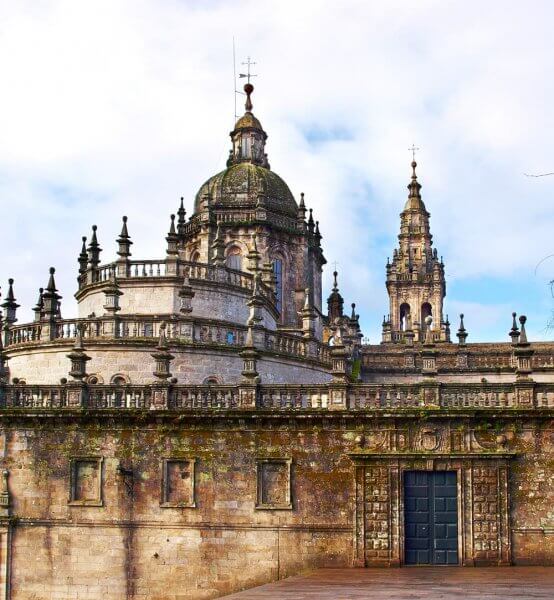
Since the Middle Ages, the city has been the 3rd Catholic shrine after Jerusalem and Rome, and the Cathedral of St. James in Santiago de Compostela is one of the most important places of worship in Europe. Among other things, it is often called the cultural capital of Galicia, because it is here that the University of Santiago-de-Compostela, founded in the 15th century and considered one of the oldest educational institutions in Spain, is located. In the late 90s, the old part of the city was included in the UNESCO World Heritage List. Since then, he has been under state protection.
Main attractions
Almost all the sights of Compostela are located in the Old Town, which is a complex interweaving of streets and squares. Here you can find many historical sites – ancient houses and fountains, monasteries and chapels, statues, churches and palaces. The most crowded street in the historic district is Rúa do Franco, dotted with cozy bars and national Galician restaurants. Other popular places include not only the Cathedral itself, but also the Quintana Square with its ancient cemetery, the College of St. Jerome, the Rajoy Palace, the Palacio del Helmires, and many other very interesting places. The architecture of this area clearly traces elements of several styles at once – Gothic, Romanesque and Baroque. The oldest monuments and buildings date from the 12th-13th centuries, although there are also later masterpieces.
The most unusual feature of the historical part of Santiago de Compostela is the numerous images of shells, the main symbol of pilgrims, applied to the walls, squares and pavements. You can walk around the Old Town not only on foot, but also on the tourist train that starts from Praza do Obradoiro and goes past all the important sights. Let’s follow its route!
St. James ‘ Cathedral
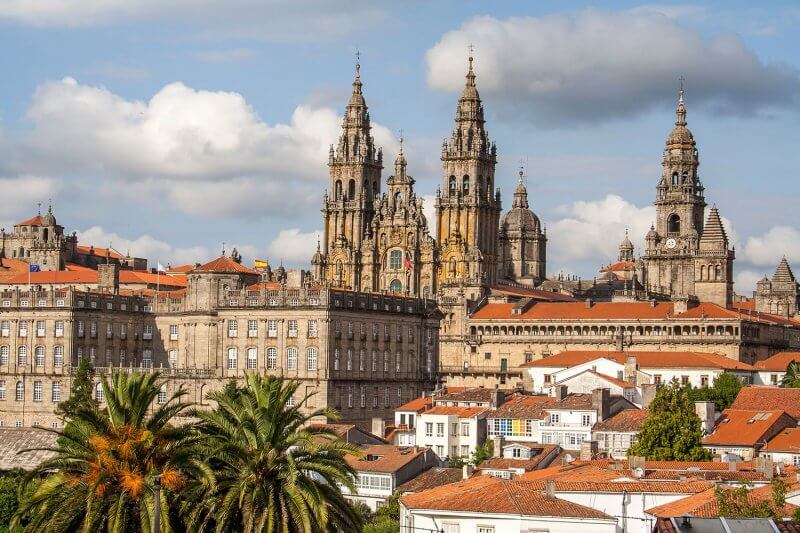
The Cathedral of Santiago de Compostela, built between the 11th and 12th centuries, is not only the main attraction of the Old Town, but also one of the most beautiful church buildings in the world. Over the long history of its existence, it has managed to survive several reconstructions, so now in its appearance you can see the features of a variety of architectural styles – from Gothic to Baroque.
The towers of the church rise above the city at a height of 80 m, and the three-nave space occupies more than 8 thousand square meters. m. Each of the 4 facades of this monumental building is a real work of art. But the entrance portal, created in the 12th century and decorated with 2 hundred sculptures of religious themes, deserves the most attention. Of even greater interest is the Portico of Glory, installed at the western wall in 1188. The entire surface of this colonnade is dotted with elegant stone figures, reminiscent of famous biblical stories. At the foot of the Portico stands a monument to the medieval Romanesque sculptor who completed the work on the gallery. This is a favorite place of students: it is believed that if you hit your head three times on the forehead of the master, then the mind will noticeably increase.
The interior of the Cathedral of Saint James of Santiago de Compostela in Galicia contains many rare items. So, just behind the altar you can see a pedestal with a throne, on which sits a wooden statue of St. John the Baptist. Of James. A little further on, you can see a 60-kilogram censer that holds at least 40 kg of incense and coal. To rock Botafumeiro, as the locals call it, you will need the efforts of 8 church ministers. It is rumored that at one time it played the role of a kind of air freshener, drowning out the smell from numerous and long-unwashed pilgrims.
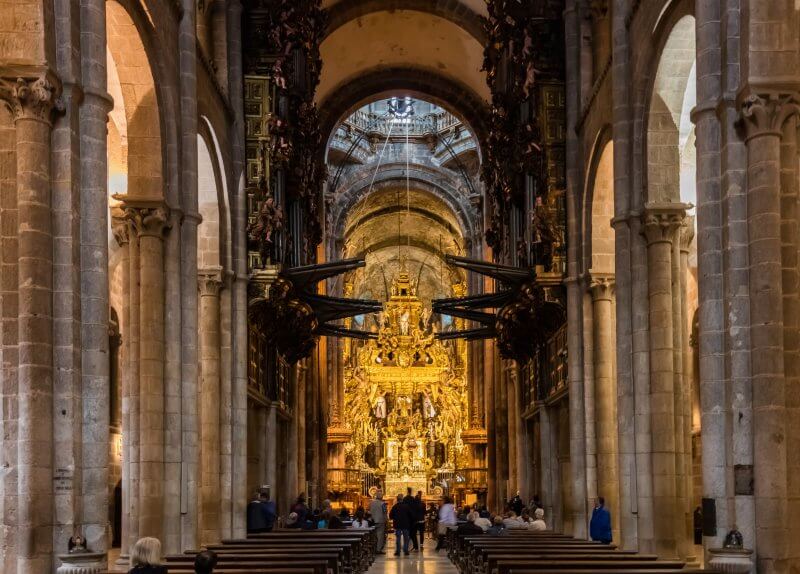
In one of the chapels of the temple there is another important attraction-the tombs of the monarchs who ruled Spain in the late 12th and early 15th centuries. But behind the south nave you can see the monastery, made in the style of Plateresco and is almost the largest cell in the country. The main treasure of the Cathedral of Santiago de Compostela is the remains of the famous apostle, resting in a silver urn under the central altar.
Among other things, the Cathedral Museum, founded in 1930, is located on the territory of the complex.Among its exhibits are rare archaeological finds, works by master Mateo, Romanesque artifacts, sculptures that decorated the cathedral in previous centuries, and much more. This also includes the library, the Chapter House, which houses a unique collection of tapestries, the Goya Hall and the Mannerist cloister. The expositions, divided into 3 separate parts, can be viewed both independently and as part of an organized tourist excursion. During the tour, you can not only admire valuable works of art, but also observe archaeological excavations, visit the Palace of Guelmires, and walk along the medieval roofs of the Cathedral of Santiago de Compostela in Spain.
- Location: Praza do Obradoiro 15704, S / N.
- Opening hours: from 09: 00 to 20: 00.
Obradoiro Square
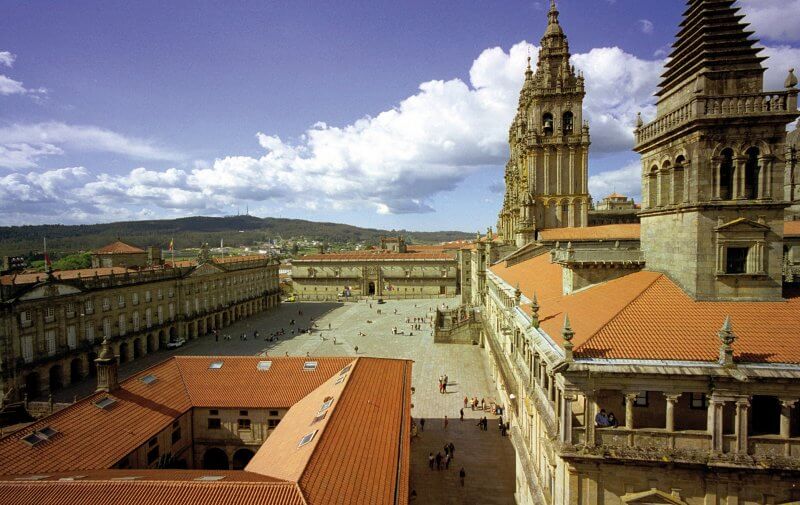
Obradoiro Square is the center of the Old Town and one of the largest squares in the province of Galicia. Surrounded by four historic buildings that embody different aspects of urban life – the aforementioned Cathedral, the Catholic Monks ‘ Hostel, the Rajoy Palace and the Colegio de San Jeronime, the local university. Most of these buildings are made of granite, which gives them a majestic look and a special atmosphere. In the center of Plaza del Obradoiro there is a star with 8 rays and a sign stating that this object is under UNESCO protection.
Oviedo is a small town in Spain with impressive architecture
Catholic Monks ‘ Hostel
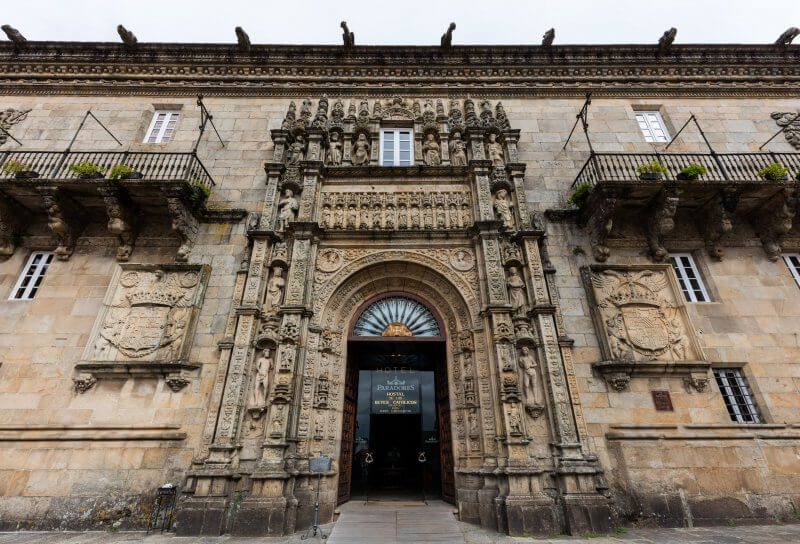
Hostal de los Reyes Catolicos, built in 1486 after a visit to Santiago de Compostela by the so-called Catholic Monarchs, has served as a shelter for tired pilgrims for many years. Currently, this beautiful historical building houses a 5* hotel, which costs at least 220€ per day. And this is in low season! The architecture of the Hostel is a vivid example of the Gothic Plateresco, elements of which can be traced not only in the decorative facade, but also in the design of the courtyards.
Location: Plaza del Obradoiro.
Monastery of San Martin Pinario
No less important attraction of Santiago de Compostela in Spain is the medieval Benedictine monastery, built in the middle of the 9th century. However, then it was an ordinary chapel, which was soon dismantled and replaced by a larger and more impressive building. By the end of the 15th century, the Monasterio de San Martin Pinario became the richest and most influential institution in Galicia, and eventually the second largest monastery in Spain (the first was the Escorial).

By the 19th century, the monastery was closed, and there are no more monks here. Now its territory, which covers an area of just over 2 hectares, houses the Institute of Theology, a School of theology, a Theological seminary, a museum and a boarding house for students. There is also a beautiful garden and the monastery church, which houses a huge collection of sacred objects, paintings by famous artists and jewelry. The entrance to the building is crowned with the national coat of arms of Spain, adjacent to the images of Jesus Christ and St. John the Baptist. Of James.
- Location: Praza San Martino S / n, 15704.
- Opening hours: daily from 11: 00 to 19: 00.
Ticket price (monastery + museum):
- Regular – 4€;
- At a discount (pilgrims, 65+, disabled people, students, unemployed, large families) – 3€;
- Guided tour – 6€.
Alameda Park
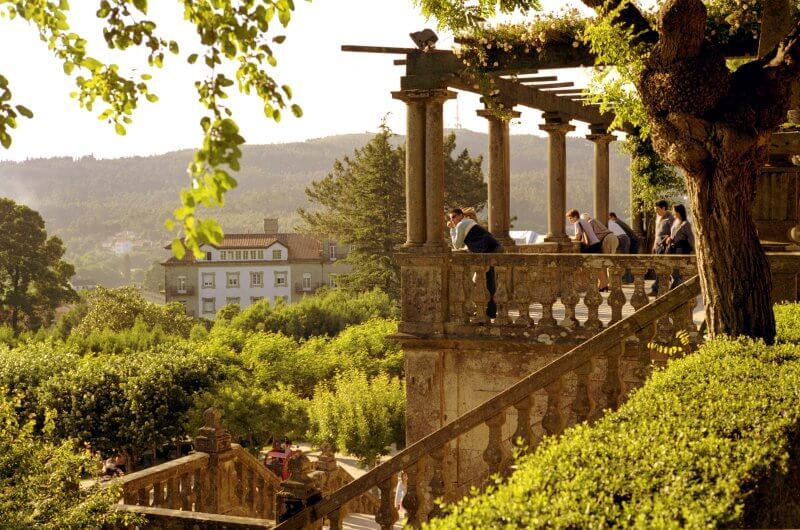
Parque de la Alameda is the central park of Santiago de Compostela, located between the old and new quarters of the city. It consists of 3 gardens with chestnuts, oaks, false bananas, camellias, juniper, cypress and eucalyptus. Rumor has it that previously each of these parts was intended for walking people belonging to a certain social stratum. So, in the center of the park there could be only noble and rich aristocrats, but on the outskirts – the intelligentsia and the poor.
Now there is no such division, so everyone can enjoy the beauty of Parque de la Alameda. And there is a lot to see! Statues and fountains adorn the paths of the park, various birds live in the pond near the alley, there are chapels and a music kiosk on the lawns. Among other things, it offers a beautiful panorama of the southern campus of the University and the historical center.
Location: Rua do Campino da Ferradura, 15705.
Museum of the Galician People
Among the most famous sights of Santiago de Compostela is the Museo do Pobo Galego, opened in 1993. The main task of this institution is to promote Galician art and bring it to the international level. The permanent exhibition of the museum, dedicated to the life and culture of the local population, unfolded in the building of San Domingo de Bonaval, a former convent.
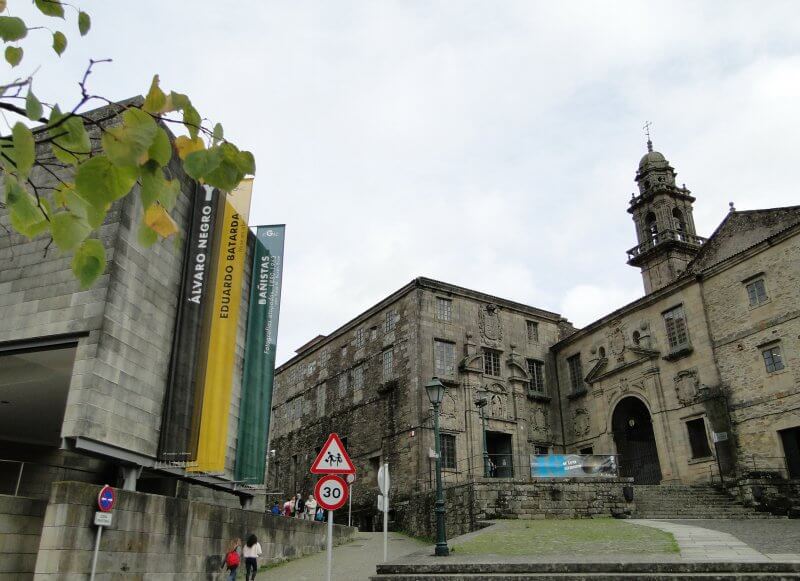
Here you can see not only the national costumes of Galicia, but also musical instruments, samples of dishes, jewelry and even fishing gear. At the end of the tour, pay attention to the triple spiral staircase leading to the spacious observation deck.
Location: San Domingos de Bonaval, s / n, 15703.
Opening hours:
- Tues – – Sat. : from 10: 30 to 14: 00 and from 16: 00 to 19: 30;
- Sun. and holidays: from 11: 00 to 14: 00.
Ticket price:
- Regular – 3€;
- At a discount (students 18 years old, seniors 65+) – 1€.
St. Francis Cathedral
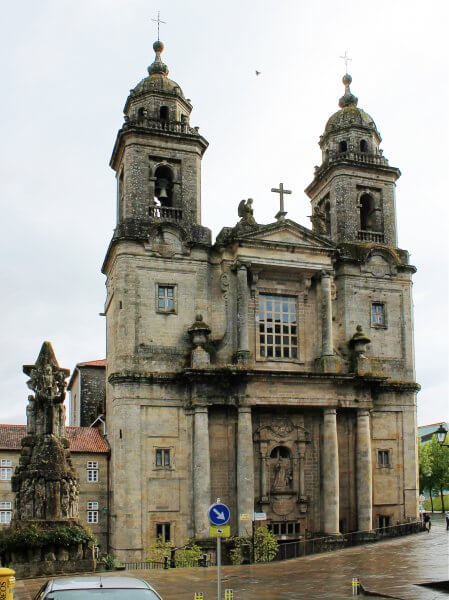
Convento de San Francisco is a Franciscan monastery built in 1214 on a site called Val de Dios. Unfortunately, only a few Gothic arches have survived from the original building to our times – everything else was destroyed during wars and natural disasters. The current building of the monastery, made in the Baroque style, was built much later – in the middle of the 18th century. The central elements of this structure are the statue of St. Francis, created by the famous sculptor Jose Ferreiro, and a small museum, whose main attractions are the shrines brought from the Holy Land.
Location: Rua Campino de San Francisco 3, 15705.
Habitation
In Santiago de Compostela, you can find accommodation for every taste and budget. At the same time, low-cost family hotels, guest houses and apartments designed more for pilgrims than for rich tourists are in the greatest demand. It is especially “hot” in the summer, when the entire Orthodox world celebrates the Day of St. Nicholas ‘ Memory. Of James. If you decide to come here during this period, book your room in advance-ideally 3-4 months in advance.
Most of the hotels are located in the central part of Old Town, as well as near the railway station and bus station. The settlement of each of these places has certain features. So, if you prefer the historical area, you will get quick access to the main city attractions and will be able to plunge into the atmosphere of this medieval settlement.
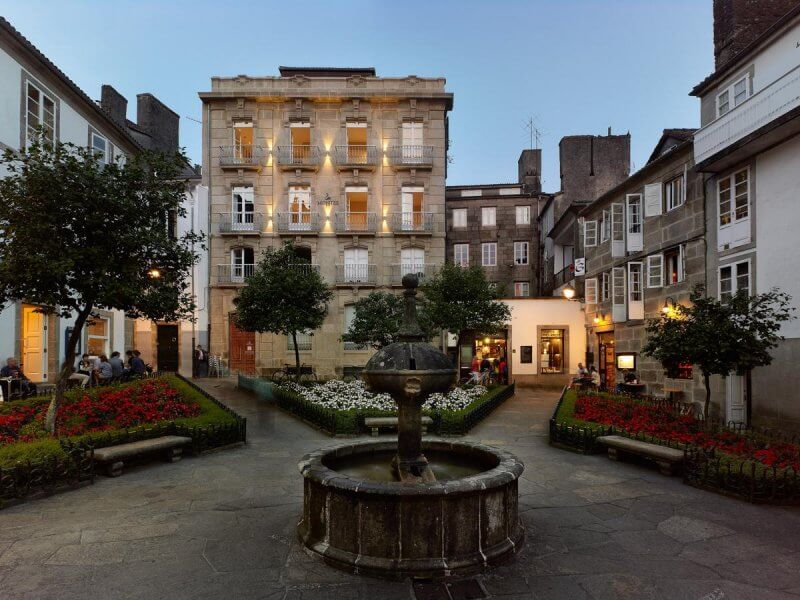
However, most hotels are located in old buildings, which can not boast not only spacious rooms, but also the presence of basic amenities such as an elevator and air conditioning. In addition, cafes and souvenir shops are located on the first floors of such buildings, so people crowd there all day. It should also be noted that entering the Old Town by car is strictly prohibited, so please specify where the parking lot is located.
Check in at the train station is worth it for those who are passing through Santiago de Compostela and do not want to waste time on the way to the train. The area is clean, modern and peaceful. You don’t have to worry about criminal elements – they keep order here. The only drawback is the constant sound of wheels. The situation is approximately the same with the bus station.
If we talk about prices, then the approximate cost of living in a 3* double room in a hotel will cost 30-80€ per day, while for living in a 5* you will have to pay from 70 to 190€.
How to get
Santiago de Compostela has good transport links to other cities in Spain, as well as Portugal. Most often, travelers go to Santiago from Porto or Madrid.
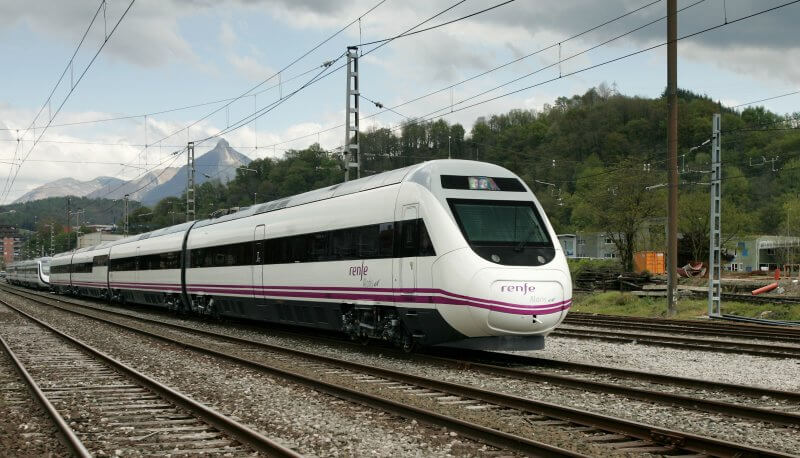
If you don’t know how to get from Madrid to Santiago de Compostela, follow our tips.
| Type of transport | Departure point | Departure hours | Arrival point | Travel time | Ticket price | |
|---|---|---|---|---|---|---|
| Train(carrier “Renfe” — www.renfe.com) | Madrid Chamartín | 14:5718:54 | Santiago-de-Compostela | 5 – 5.5 hours | 40 – 57€ | |
| Bus(Alsa carrier — www.alsa.com) | Madrid Aeropuerto Barajas T4 | 14:4515:4523:59 | Santiago-de-Compostela | 7.5-9.5 hours | 48 – 62€ | |
| Madrid Estacion Sur | 15:4516:45 | |||||
| Madrid Moncloa | 16:0017:00 | |||||
| Airplane | Madrid Aeropuerto Barajas | 15:4519:4522:30 | Santiago-de-Compostela(SCQ) | 1-3.5 hours | 204 – 793€ | |
On a note! The international airport is located 10 km from Compostela in Lavacolla. In addition to domestic flights from large cities in Spain, it also accepts aircraft from other European countries. As for tickets, in addition to the official websites of carriers, you can buy them on www.omio.ru.
Interesting facts
In the biography of Santiago de Compostela (Spain), you can find a lot of interesting facts. Here are just a few of them:

- The main culinary symbol of Santiago de Compostela is the lemon cookies made by the nuns of the San Pelayo monastery.
- Despite the status of a large settlement and the capital of the region, there is not a single industrial enterprise in the city – the air here is fresh and clean, almost the best in the country.
- This is the first place in the history of mankind for which a real travel guide was invented. It was called the “Calixtus Codex”, which was created in the first half of the 12th century and contained recommendations for pilgrims who wanted to follow the Path of St. James.
- In 2000, the city was awarded the title of European Capital of Culture.
Camino de Santiago: A Guide to the Pilgrim’s Way


